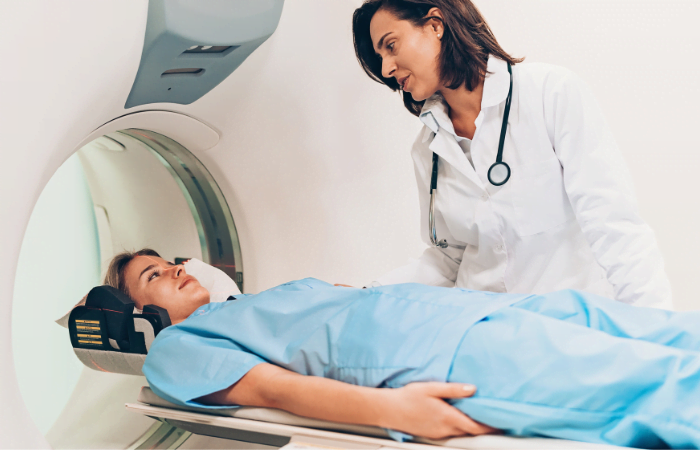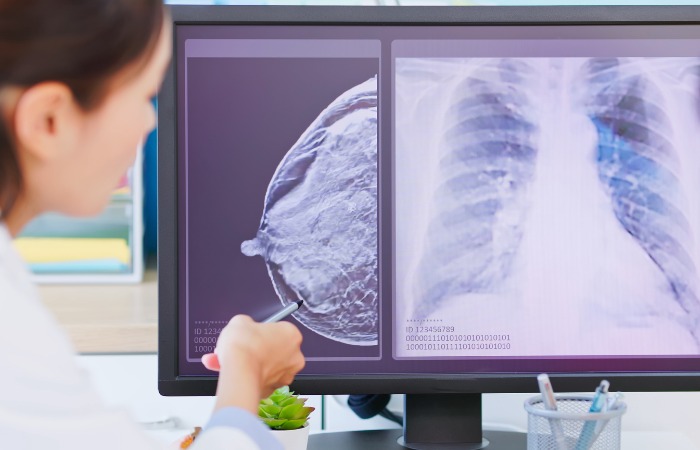
Breast health is an essential aspect of overall well-being, and early detection of potential issues is critical for successful treatment. Among the various imaging techniques available, Magnetic Resonance Imaging (MRI) has emerged as a powerful tool for breast diagnostics. This article explores the benefits of breast MRI, how the procedure works, and the situations where it is most beneficial.
A breast MRI is a non-invasive imaging test that uses magnetic fields and radio waves to produce highly detailed images of the breast tissue. Unlike mammograms or ultrasounds, which rely on X-rays or sound waves, MRI provides a more comprehensive view, making it particularly useful for detecting abnormalities that may not be visible with other methods.
1. High Sensitivity for Detecting Abnormalities
Breast MRI is known for its ability to detect even the smallest of abnormalities. It can identify cancers that may be missed by mammograms or ultrasounds, especially in women with dense breast tissue.
2. Early Cancer Detection
For women at high risk of breast cancer due to genetic factors or family history, MRI is a crucial tool for early detection. Identifying cancer at an early stage significantly improves treatment outcomes.
3. Supplementary Imaging
Breast MRI is often used in conjunction with mammograms for a more accurate diagnosis. This combination ensures that no abnormalities are overlooked.
4. Evaluating Treatment Effectiveness
For patients undergoing chemotherapy or other treatments, a breast MRI helps assess how well the treatment is working. It provides real-time insights into changes in the tumor size and structure.
5. Detailed Pre-Surgical Planning
Before surgery, a breast MRI helps in accurately mapping the size and extent of the tumor, enabling surgeons to plan the procedure with precision.
1. Preparation
Clothing and Metal Removal: Patients are asked to wear a hospital gown and remove all metallic objects, such as jewelry, watches, or hairpins.
Contrast Dye: In most cases, a contrast agent is administered intravenously to enhance the clarity of the images.
2. During the Scan
Positioning: The patient lies face down on a table with their breasts positioned in specially designed openings.
Imaging: The table slides into the MRI machine, where magnetic fields and radio waves work to create detailed images.
Timeframe: The entire scan takes about 30–60 minutes, during which the patient must remain as still as possible for accurate imaging.
3. After the Scan
Patients can resume normal activities immediately after the scan unless otherwise instructed by the doctor. Results are typically reviewed by a radiologist, who provides a detailed report to the referring physician.

1. High-Risk Screening
Women with a strong family history of breast cancer or genetic mutations like BRCA1 or BRCA2 are often recommended to undergo breast MRI in addition to mammograms for more comprehensive screening.
2. Evaluating Abnormalities Found in Mammograms
If a mammogram or ultrasound detects a suspicious area, a breast MRI can provide additional details to determine whether it’s benign or malignant.
3. Pre-Surgical Assessment
Breast MRI is frequently used before surgery to map the tumor's exact location, size, and involvement with surrounding tissues.
4. Monitoring Post-Treatment
For patients who have undergone treatment for breast cancer, MRI helps monitor for any recurrence or complications.
5. Dense Breast Tissue
In women with dense breasts, mammograms may not provide clear results. MRI is an effective alternative for clear and accurate imaging.
6. Breast Implant Evaluation
MRI is the gold standard for assessing implant integrity and detecting potential complications like ruptures or leaks.
While breast MRI is a powerful diagnostic tool, it’s not without its limitations:
High Cost: MRI is typically more expensive than other imaging methods, although affordable options are now available at select centers. Diagnosis Diagnostic provides affordable all types of MRI Scans at the daytime 2500 whereas at night time scans prices are 1900/- only.
False Positives: The high sensitivity of MRI can sometimes lead to false positives, requiring additional tests for confirmation.
Not a Standalone Tool: MRI is best used in combination with other imaging techniques, as it cannot replace mammography entirely.
We prioritize your health with world-class imaging technology and expert radiologists. Here’s why we stand out:
Affordable Pricing: Quality diagnostics shouldn’t break the bank. Our breast MRI services are priced competitively to make them accessible to everyone.
Advanced Technology: We use state-of-the-art MRI machines for accurate and detailed imaging.
Experienced Team: Our skilled radiologists ensure precise diagnosis and timely reporting.
Comfort and Care: Patient comfort is a top priority. Our facilities are designed to provide a stress-free experience.
Convenient Locations: Diagnopein is situated in major cities, including Pune, Mumbai, Nagpur, Bhopal, and Ahmednagar, ensuring easy access to top-notch diagnostic services.
If you’re considering a breast MRI, look no further than Diagnopein Diagnostics. With centers in Pune, Mumbai, Nagpur, Bhopal, and Ahmednagar, we bring advanced imaging technology and compassionate care right to your doorstep. Schedule your appointment today and take the first step toward safeguarding your health.